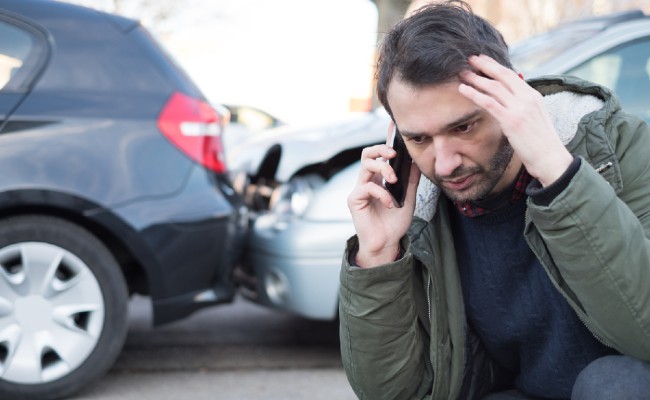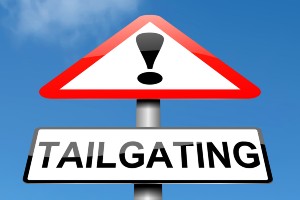
Rear end car accidents – when one vehicle is hit in the rear by another following behind – are one of the most common car accidents on the roadway today. Even though they don’t typically cause fatalities, whiplash is one of the most common injuries suffered. They can also cause neck and spine injuries and concussions.
Most often, the driver who collided into the rear of the front, or lead, vehicle is considered to be at fault under both Missouri and Kansas law. However, in both states there are exceptions to this rule. An experienced car accident attorney can help determine fault.
Example of an exception: If the lead car is “brake checking” and this leads to a rear end accident, the lead driver may be deemed to be at fault.
Brake checking is when a driver hits the brake hard to send a message to the tailgater. S/he does not have a legitimate reason to hit the brake.
The courts assign fault in car accident cases. In the state of Missouri, liability in car accidents is determined using a comparative negligence doctrine, meaning the courts will determine the percentage of fault and may assign fault to either or both drivers.
(Note: this is a general overview and does not address all scenarios.)
Missouri is one of several states which have adopted what is called the “rear-end collision doctrine”. This doctrine addresses the unique situations created by rear end collisions. Under this doctrine, the injured driver of the lead vehicle is not required to prove a specific negligent act of the rear colliding driver.
The injured front driver must show:
The judge looks at all aspects of the car accident and will then determine if the doctrine should apply; if it does, then the doctrine shifts the burden to the at-fault driver to prove he or she utilized the highest degree of care under the circumstances.
Have you been in a rear end car accident? Call us at (877) 284-6600 for a free, no-obligation case review.
Drivers have a general duty to operate their vehicle in a reasonable and safe manner to protect others. Operating a vehicle in any manner which breaches these duties may be considered to have been negligent.
 Tailgating, when one vehicle follows too closely behind another and results in the tailgater’s inability to stop in time (causing a rear end accident)
Tailgating, when one vehicle follows too closely behind another and results in the tailgater’s inability to stop in time (causing a rear end accident)Tip to avoid tailgating: Use the 3-second rule to help you determine a reasonable or safe distance in normal conditions. If the roadway or other conditions become more dangerous, adjust this to 4 seconds or more. To do this, pick a stationary object like a sign. Start counting to three once the rear-end of the vehicle ahead of you has passed it. You are following too close if you do not make it to three before you pass the object.
 Drivers and passengers in rear end collisions often suffer from soft tissue (whiplash), concussions or head injuries due to the head snapping back and forth.
Drivers and passengers in rear end collisions often suffer from soft tissue (whiplash), concussions or head injuries due to the head snapping back and forth.
Common injuries include:
If you have been seriously injured in a rear end car accident, a personal injury or car accident attorney may be able to obtain costs of:
In any accident, the insurance company for the at-fault party is not your friend. Their goal is to settle for the least amount. The attorneys at Nash & Franciskato will make sure you are treated fairly and avoid common mistakes that may happen when you are acting on your own.
If you have been hit from behind by a negligent or reckless driver and have suffered serious injuries, having an attorney who is your advocate can offer you peace of mind during your recovery.
Call Nash & Franciskato at (877) 284-6600. We have a successful track record of helping accident victims collect the compensation they deserve. One of our experienced staff will speak with you personally and will provide you with a free, no-obligation review of your case.
INJURED? START YOUR FREE CASE EVALUATION TODAY
If you would like to receive news and blog updates on a regular basis, sign up to receive our email newsletter. Your email address will only be used to send you our newsletter and respond to inquiries.
Find related blog articles: Automobile Accidents and Personal Injury
Past results afford no guarantee of future results and each case is different and is judged on its own merits. The choice of a lawyer is an important decision and should not be based solely on advertisements.